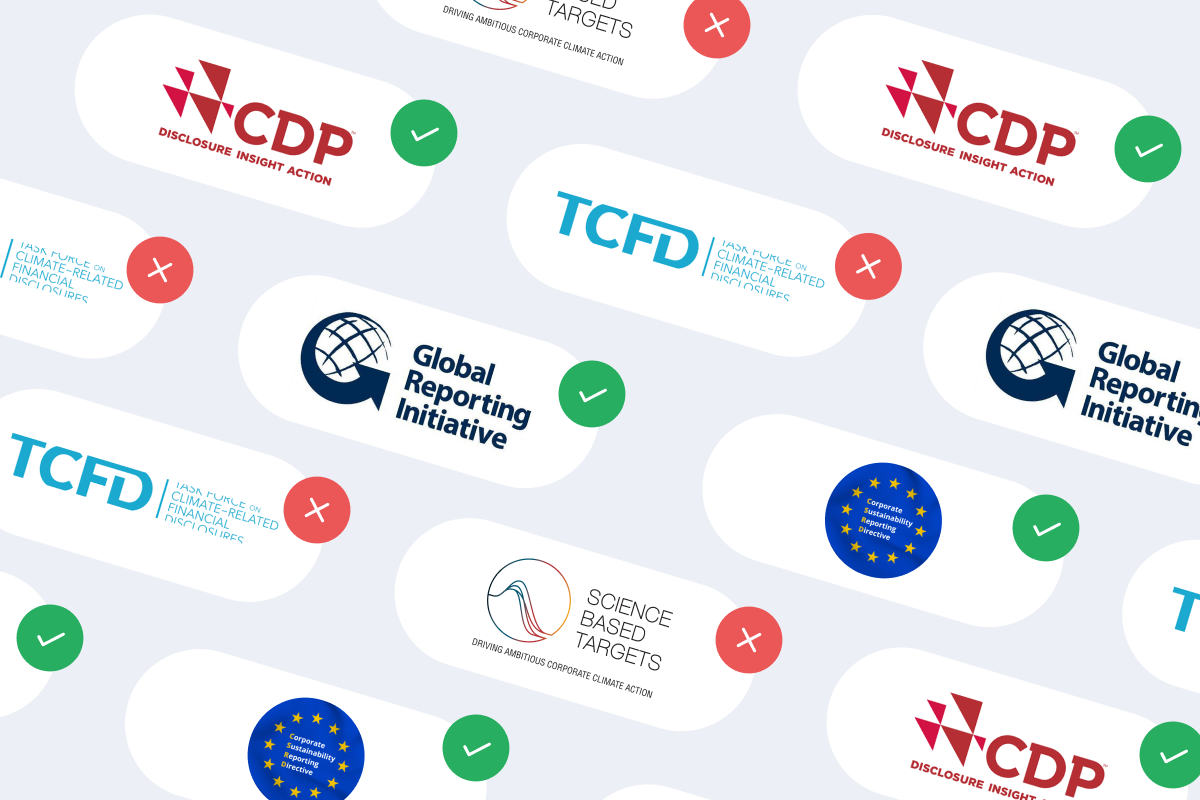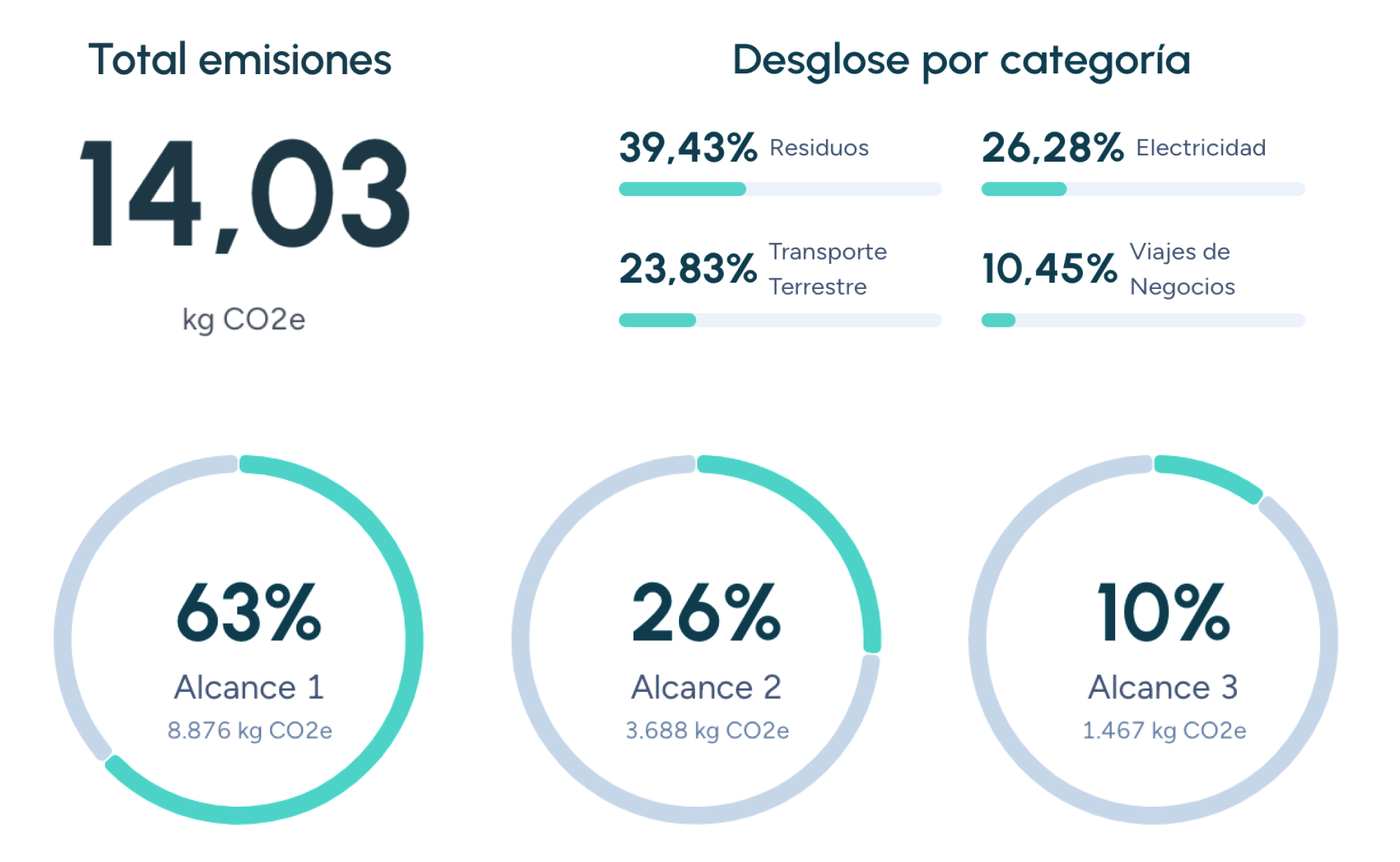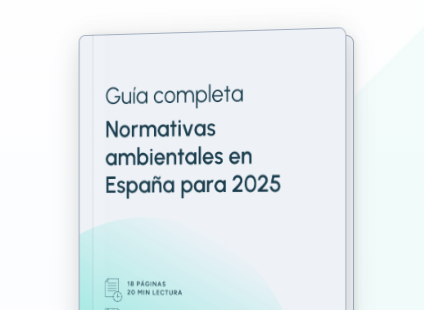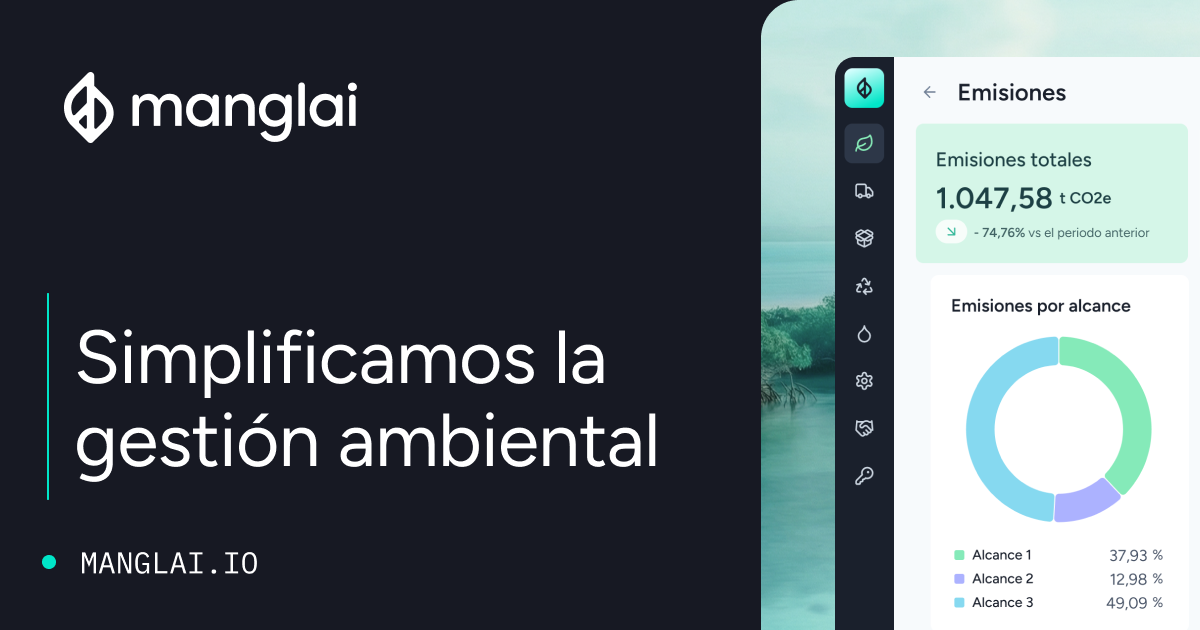Back to the blog
Legislation and regulation
CSRD for SMEs: How cascading regulation will impact your supply chain in 2025
Andrés Cester
CEO & Co-Founder
2025 will mark a turning point for corporate sustainability management in Europe. With the full entry into force of the Corporate Sustainability Reporting Directive (CSRD), thousands of companies will be required to publish detailed information on their environmental, social and governance (ESG) impacts.
Although the rule is aimed primarily at large companies, its effect will spread much further: it will cascade down to the SMEs that make up their supply chains. This means that even if your company is not directly required to report under the CSRD, your customers will still ask you for verifiable environmental, social and ethical data.
In this article, we explore how cascading regulation will transform the relationship between large companies and SMEs, what operational changes will be necessary, and how to turn this indirect obligation into a real competitive advantage in 2025.
What is the CSRD and why is it a structural shift?
The Corporate Sustainability Reporting Directive (CSRD) is the European standard that replaces and expands the former Non-Financial Reporting Directive (NFRD). Its objective is to ensure that companies report on their environmental, social and governance performance in a consistent, verifiable and comparable way.
Unlike the NFRD—which affected around 11,000 companies—the CSRD will extend its scope to over 50,000 companies in the EU.
The CSRD relies on the ESRS (European Sustainability Reporting Standards), which require precise information on:
- Carbon footprint (Scopes 1, 2 and 3).
- Climate strategies and reduction targets.
- Energy and resource consumption.
- Working conditions and human rights.
- Governance, ethics and tax transparency.
Cascading regulation: Why will it also affect SMEs?
What does “cascading effect” mean?
The cascading effect occurs when the reporting obligations of large companies are passed on to their suppliers and business partners, who must provide reliable information about their environmental and social practices.
For example, if a major construction group or energy company must report its Scope 3 emissions, it will need to know the emissions generated by all its suppliers of materials, transport and services. This includes SMEs that provide components, manage waste, transport goods or deliver ancillary services.
Why is it unavoidable for SMEs?
Sustainability reporting is no longer just a reputational issue; it’s a commercial requirement. Large companies will demand that their suppliers provide:
- Data on emissions, waste and energy consumption.
- Labour and diversity policies.
- Environmental certifications (ISO 14001, carbon footprint, EPDs, etc.).
- Evidence of compliance with human rights and good governance principles.
In other words, if an SME cannot demonstrate its sustainable performance, it risks being replaced in the supply chain.
What data will large companies request from SMEs?
To comply with ESRS, obligated companies will need to collect detailed information from their suppliers. Typical data requests include:
- Greenhouse gas (GHG) emissions: both direct (from fuel use) and indirect (from purchased energy or transport).
- Resource consumption: electricity, water, raw materials and packaging.
- Waste management: quantities generated, treatment and recycling.
- Social and labour policies: gender equality, occupational safety, training and diversity.
- Ethical commitments: regulatory compliance, anti-corruption and respect for human rights.
Many large companies are already integrating these requirements into their supplier evaluation systems. SMEs that are not prepared may lose points in tenders and sustainability audits.
How to prepare for the CSRD impact
1. Measure your carbon footprint and environmental performance
The first step is to quantify your emissions and consumption.
Carry out a carbon footprint inventory (Scopes 1, 2 and 3) and complement it with additional indicators: energy and water use and waste generation. Having this information ready will let you respond quickly to customer requests and demonstrate verifiable commitment.
For more information, see our article: Scope 3 of the GHG Protocol: practical guide to the 15 categories.
2. Embed sustainability into business management
Sustainability cannot sit only within communications. Integrate ESG criteria into operations, finance and procurement. Define internal policies on energy efficiency, equality, occupational health and supplier controls. This holistic approach strengthens your position with corporate clients looking for strategic partners aligned with their values and climate goals.
3. Develop a basic internal reporting system
Even if you are not obliged to publish a CSRD report, set up a simplified reporting system to capture key ESG indicators. This could be annual factsheets, dashboards or internal summaries of environmental and social performance. Companies that systematise this data respond more agilely to audits and tenders.
4. Collaborate with your customers and suppliers
Transparency is a network effort. Maintain active dialogue with key customers to understand what data they will request and in which format. Likewise, ask your own suppliers for information to complete your traceability. SMEs that adopt this collaborative dynamic integrate more easily into sustainable supply chains and strengthen their competitive position.
How will the CSRD affect different industries?
Construction and materials
Construction firms will need to report the environmental impact of all materials used—from cement to steel and finishes. Their (often SME) suppliers will be required to provide verified EPDs, lifecycle information and product-level emissions data.
Transport and logistics
The sector must quantify the impact of goods transport, fuel consumption and fleet footprint. Logistics companies will have to provide precise data on kilometres travelled, energy consumption and associated emissions.
Manufacturing
Manufacturers will have to measure the carbon footprint of their production processes and prove efficiency improvements. Industrial SMEs already operating environmental management systems or circular economy programmes will enjoy a competitive edge.
Professional services and ICT
Service companies must also report indirect emissions (offices, travel, suppliers). Tech firms and consultancies will need to demonstrate strong social and governance practices to retain contracts with large corporates.
From obligation to value: using CSRD as a competitiveness lever
Meeting new requirements may seem complex, but early movers are already seeing tangible benefits:
- Preferential access to B2B contracts and tenders: major groups prioritise suppliers with verified ESG policies.
- Operational efficiency: measuring consumption and emissions reveals opportunities for energy savings and cost reduction.
- Reputation and trust: transparency strengthens brand credibility with customers, banks and investors.
- Talent attraction and sustainable finance: CSRD-aligned projects are more attractive to responsible employees and investors.
What if you don’t adapt in time?
Ignoring CSRD’s impact does not shield SMEs from its consequences: companies unable to provide reliable data will find it harder to access large clients, international contracts and green finance. Lack of information can also harm supplier ratings in sustainable procurement platforms and external audits.
Adapting does not require massive tech spend; it requires planning, training and commitment. Starting now can be the difference between becoming a strategic supplier or being left out.
CSRD for SMEs: anticipate the regulatory cascade
The CSRD is redefining the rules of the game for the entire European economy. Although SMEs are not directly obligated, the cascading effect will place them at the centre of the new model of transparency and sustainability.
Companies that start measuring, reporting and communicating their ESG performance today will be better positioned to retain clients, attract investment and lead the sustainable transition.
Complying with the CSRD is not just about following a directive; it’s about preparing to compete in a market where sustainability is the standard.
FAQs about CSRD for SMEs
Is my SME required to report under the CSRD?
Only large companies are directly obligated, but if you work with them you will be asked to provide ESG information so they can complete their own reports.
What specific data should I collect as an SME?
Primarily emissions (carbon footprint), resource consumption, social policies, ethical compliance and environmental certifications.
Are there simple tools for SMEs?
Yes. Many chambers of commerce and consultancies offer self-assessment tools and simplified reporting platforms for SMEs.
When will large companies start requesting data?
Throughout 2025, coinciding with the first CSRD reporting cycle. Information requests are already being incorporated into supplier contracts and audits.
How can Manglai help?
Manglai supports organisations with carbon footprinting, ESG reporting and CSRD readiness—integrating verifiable data and corporate sustainability strategies.
Andrés Cester
CEO & Co-Founder
About the author
Andrés Cester is the CEO of Manglai, a company he co-founded in 2023. Before embarking on this project, he was co-founder and co-CEO of Colvin, where he gained experience in leadership roles by combining his entrepreneurial vision with the management of multidisciplinary teams. He leads Manglai’s strategic direction by developing artificial intelligence-based solutions to help companies optimize their processes and reduce their environmental impact.
Content
Companies that trust us

B Corp Certification in Spain: Cost-Benefit Analysis and the Path to Impact
We analyze B Corp certification in Spain: costs, real benefits, and the steps to obtain the seal that drives sustainability.
06 October, 2025
GHG Protocol vs. ISO 14064-1: Which Standard Should You Choose for Your Emissions Inventory?
Discover the differences between the GHG Protocol and ISO 14064-1 and choose the ideal standard for your emissions inventory and the MITECO.
01 October, 2025
Guide to the MITECO Registry: Verification and Obtaining the “Calculate, Reduce, Offset” Seals
Learn how to calculate, verify, and register your footprint with MITECO and obtain the Calculate, Reduce, and Offset seals.
29 September, 2025
Guiding businesses towards net-zero emissions through AI-driven solutions.
© 2025 Manglai. All rights reserved
Política de Privacidad


